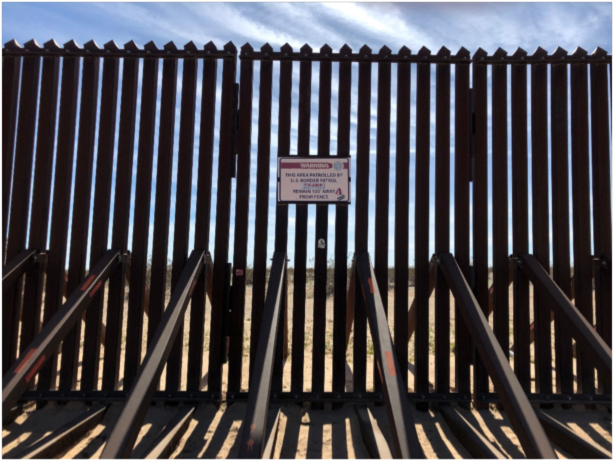Remote Hearings Help Courts Tackle Backlogs, but Raise Legal Questions
The Board of Immigration Appeals (BIA) issued a decision last week in Matter of Garcia, which facially involves whether an El Salvadoran national is eligible for cancellation of removal under section 240A(b) of the Immigration and Nationality Act (INA). The real issue, however, is which U.S. circuit court has jurisdiction over cases in which the alien or the immigration judge (IJ) — or both — appear remotely via “video teleconferencing” (VTC). The BIA attempts to resolve that issue, but it still poses serious problems as DHS and the courts prepare for a tsunami of illegal migrants once Title 42 ends on May 11.
Controlling Law. Congress and the executive branch have “plenary power” over immigration, and consequently it is the ultimate purely federal issue. Given that, there would ideally be one set body of law that applies in all 11 federal circuits with immigration courts.
Little is ideal in immigration law, however, and for that reason the interpretation of the INA often differs wildly from the most liberal circuits (the First and especially the Ninth) and the most conservative (Fifth and Eleventh).
The reason why there’s so much ideological variation among the circuit courts requires a lengthy (and largely irrelevant for purposes of this analysis) explanation, but you can trust me — it’s real. When I left the San Francisco District Office of the former INS (in the Ninth Circuit) for the Baltimore District Office (in the Fourth Circuit), I might as well have been practicing immigration law in a different country.
I have long argued that Congress should amend the INA to create a federal appellate court for immigration law (there are such “U.S. Courts of Special Jurisdiction” for areas like veterans claims and the armed services), but I also oppose creating Article I hearing-level immigration courts because it would just make backlogs worse. I’m not likely to see the former anytime soon.
In any event, Congress attempted to settle the question of which circuit law governs individual cases by clarifying the question of which circuit has jurisdiction over aliens’ appeals by amending section 242(b)(2) of the INA in 1996 to clarify that petitions for circuit review of BIA orders were to “be filed with the court of appeals for the judicial circuit in which” the IJ “completed the proceedings”.
At the time, that simplified matters for the immigration courts because all an IJ had to do was follow the circuit law in the jurisdiction where the court was located.
Of course, back then all filings were on paper and IJs were lucky to have a greenscreen computer and a dot-matrix printer. That said, that 1996 law also permitted IJs to hold removal hearings via what was called “video conference” in addition to telephonically. Even then, video teleconferencing or “VTC” was largely aspirational, and extremely limited.
Technology Improves. Or perhaps Congress had keen foresight, because VTC and other remote hearings have taken off ever since.
When I was an IJ, I had jurisdiction over two federal correctional institutions and numerous Pennsylvania state prisons. Pennsylvania is a deceivingly large state, and if I had to travel from my home court (in York, Pa.) to each of those facilities, I would have been on the road more than I was on the bench.
Consequently, I increasingly relied on VTC, and the more that my fellow IJs and I used it, the better the technology got.
Moreover, as the BIA explained in Matter of Garcia, the Office of the Chief Immigration Judge (“OCIJ”, the DOJ component that runs the immigration courts) now “operates three immigration adjudication centers” where IJs hear cases in other immigration courts throughout the country.
And then there’s Covid-19, which either shuttered immigration courts or increased their reliance on online hearings — usually both, but more the former than the latter at the outset of the pandemic.
These factors have all led to increasing reliance on such “remote” hearings. In FY 2017, fewer than 16 percent of cases were held via VTC, while 83 percent were in person. By FY 2022, less than half (46 percent) of cases were in person, while just short of 25 percent were via VTC. The rest were either internet hearings at a remote location (16.6 percent), in-court internet hearings (9.25 percent), or telephonic hearings (3.4 percent).
Matter of R-C-R-. To clarify the jurisdictional question in the face of this increase in remote hearings, the BIA issued a 2020 decision in Matter of R-C-R-, in which it held: “The circuit law applied to proceedings conducted via video conference is the law governing the docketed hearing location” where the papers in the case were filed “as opposed to the location of the administrative control court”.
The “docketed hearing location” was usually where the alien respondent was, regardless of where the IJ was physically sitting when hearing the case.
Dueling Circuits. The problem is that jargon like “docketed hearing location” doesn’t really tell circuit courts which one has jurisdiction. And if you know anything about circuit court judges, you shouldn’t be surprised to hear that circuit courts often try to find that they, in fact, do have jurisdiction.
That has led to dueling circuit court opinions on the issue.
One of which was Luziga v. Attorney General, a 2019 opinion in which the Third Circuit held it had jurisdiction over the case of an alien who’s case was in Pennsylvania (in the Third Circuit) even though the IJ hearing the case was physically located in Virginia (in the Fourth Circuit).
The other was Herrera-Alcala v. Garland, a June 2022 opinion in which the Fourth Circuit held it had jurisdiction over the case of an alien in Louisiana (in the Fifth Circuit) who appeared via VTC because the IJ who heard the case was in Virginia.
The Second Circuit broke this trend (while splitting the baby to a degree) in its October 2022 opinion in Sarr v. Garland, another case in which the respondent appeared via VTC from Louisiana, this time before an IJ in New York.
The alien filed a petition for review of the IJ’s denial of his application for protection (a decision the BIA had affirmed) and for a stay of removal pending consideration of that appeal with the Second Circuit. The government both opposed that petition and requested transfer of the case to the Fifth Circuit.
The Second Circuit granted a temporary stay, only to conclude that the Fifth Circuit was the proper venue for the petition.
Finding that section 242(b)(2) of the INA was ambiguous in the context of VTC hearings, the court leaned hard on the immigration court jurisdiction regulation, which states: “Jurisdiction vests, and proceedings before an Immigration Judge commence, when a charging document is filed with the Immigration Court by the Service.”
In Sarr, the Notice to Appear (“NTA”, the charging document in removal proceedings) was filed in Jena, La., and as the court explained: “Nothing after Sarr’s proceedings commenced in Louisiana suggests that venue ever moved elsewhere.” Absent a change of venue in the case elsewhere, the court concluded, the Fifth Circuit was the proper venue for the case.
Despite that finding, the Second Circuit denied the petition for a stay, which had been pending while these issues were sorted out.
Matter of Garcia. The BIA in Matter of Garcia largely adopted the Second Circuit’s logic in Sarr.
Again, citing the controlling regulations, it held that “jurisdiction presumptively vests at the Immigration Court where the charging document is filed”, which is generally the court listed on the NTA, and that the law in that circuit is controlling “regardless of where the parties and the Immigration Judge are physically located during the hearings”.
Of course, either the government or the alien respondent can file a motion to change venue to another immigration court, but absent that, the controlling law won’t change regardless of where the IJ hearing the case physically sits.
Needless to say, however, even as the attorney general’s delegate, the BIA can’t tell a circuit court that wants to assume jurisdiction that it can’t.
The Border Disaster. Which brings me to the Southwest border, or more specifically the ongoing and (yet still) burgeoning disaster there. As noted, Title 42 is scheduled to be lifted on May 11, and when it does the number of migrants entering illegally is allegedly expected to double.
Part of the administration’s plan to deal with that surge is to return to the tool that Congress gave it — again in 1996 — to deal with illegal entrants, “expedited removal”, which allows DHS to quickly deport them.
Under the expedited removal provision, however, aliens who claim they fear return or request asylum must be interviewed by asylum officers to determine whether they have a “credible fear” of removal.
If the asylum officer issues a “positive credible fear determination”, the alien is placed into “ordinary” removal proceedings before an IJ to apply for asylum. If the asylum officer issues a “negative credible fear determination”, however, the alien can ask an IJ to review that decision.
The alien cannot appeal an IJ’s affirmance of a asylum officer’s negative credible fear determination by statute and Supreme Court precedent, but that doesn’t mean that some circuit court won’t try to review such a decision, at least in part.
Further — and this part of DHS’s plan is not clear — if DHS plans to detain and place those aliens who receive positive credible fear determinations directly into removal proceedings, the IJs hearing those cases will likely be remote, given that there are few immigration courts anywhere near the Southwest border.
Only two circuit courts — the Fifth and the Ninth — have jurisdiction over Southwest border states. Matter of Garcia would allow an IJ anywhere in the United States to hear credible fear reviews and removal cases involving border migrants there remotely under the law in those circuits, but again Herrera-Alcala at least muddies the waters on that question, as well as on any subsequent petitions for review.
OCIJ could risk it and assign IJs outside of the Fifth and Ninth Circuits to staff whatever process DHS chooses to follow in response to a post-Title 42 surge, or it could play it safe and assign just IJs from those two circuits.
Both options are problematic, because if OCIJ relies just on Fifth and Ninth Circuit IJs, they will likely be even more overwhelmed and unable to handle their regular (and already severely backlogged) dockets.
Technology enables immigration courts to tackle their overwhelming backlogs by assigning immigration judges to hear cases remotely, but remote hearings raise legal questions about the law those IJs should apply and circuit-court jurisdiction. Those questions are likely to come to a head in the coming weeks, as the end of Title 42 brings a tsunami of illegal migrants over the Southwest border.





